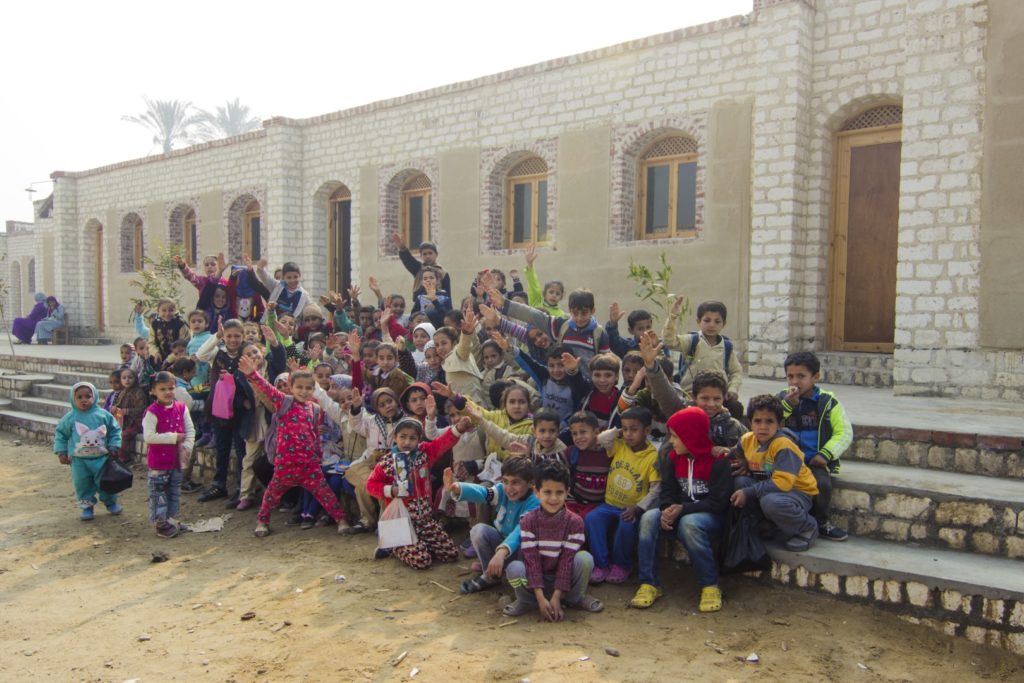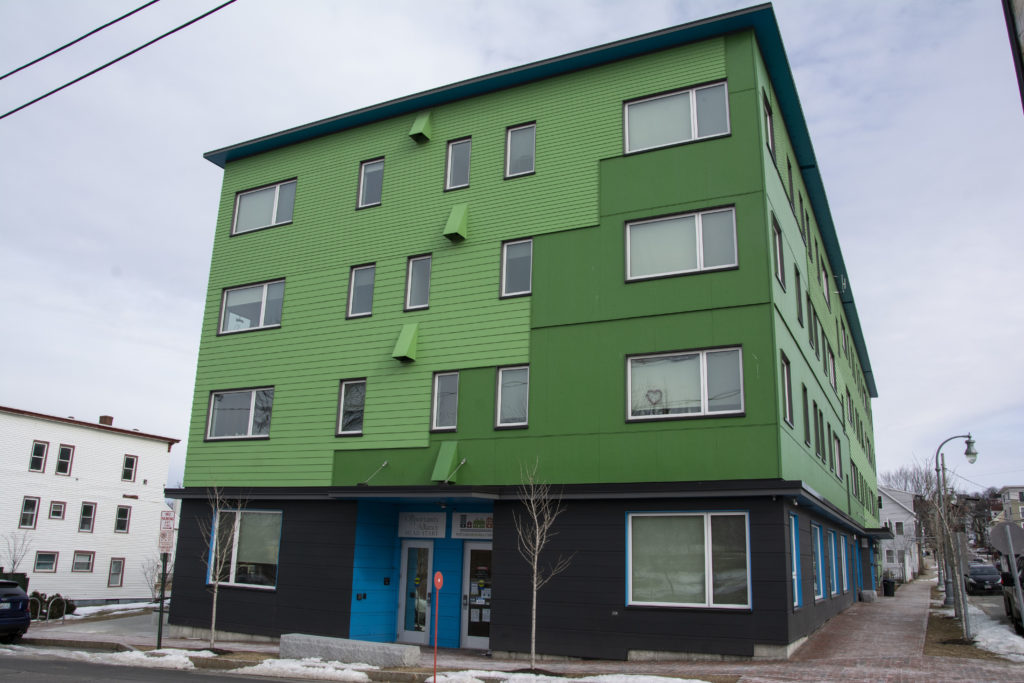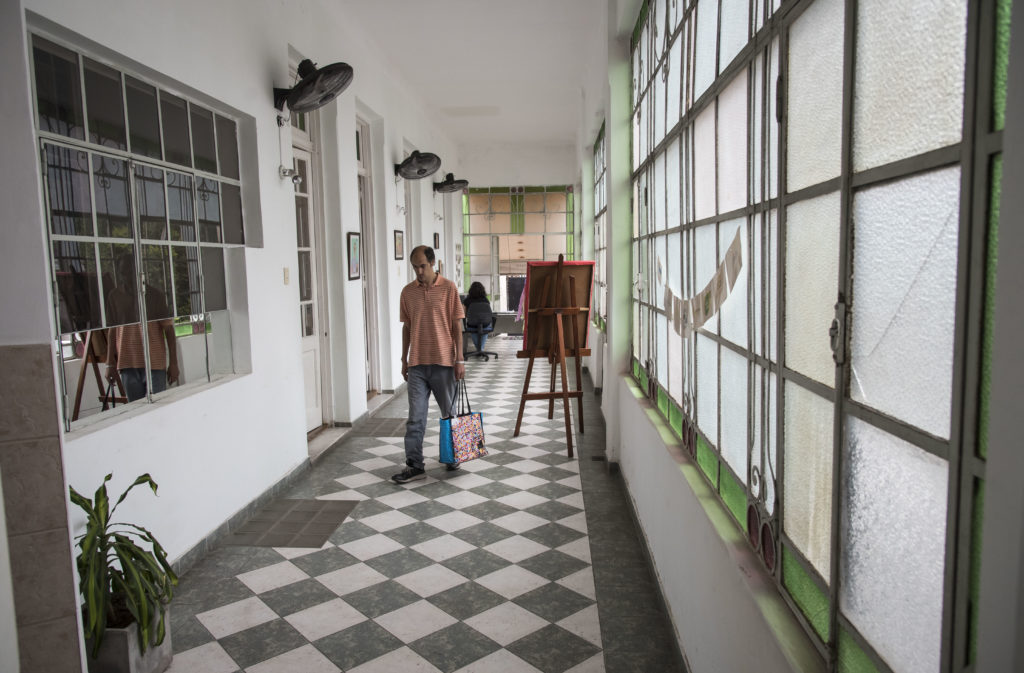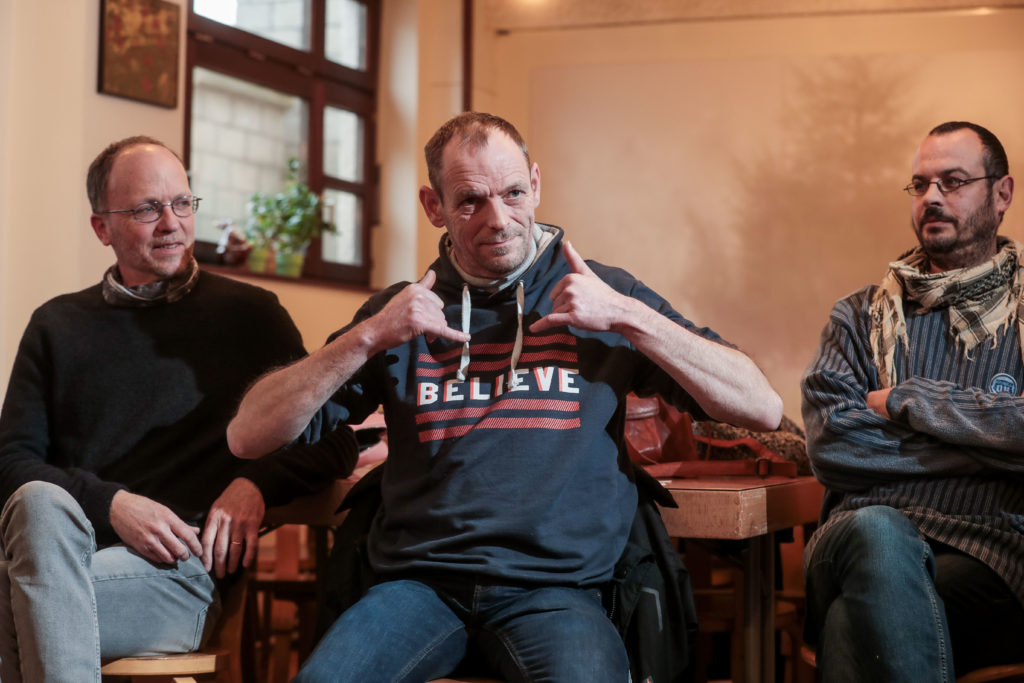Four types of housing promoting social inclusion
To promote the social inclusion of marginalised people is to facilitate their integration in society and to ensure dignified living conditions. Access to water, food, healthcare and housing are essential. These four initiatives presented in the 7.7 Billion media operation are examples of the promotion of social inclusion through housing.
Durable, affordable and sustainable buildings
Hand Over is an Egyptian social enterprise combining access to housing and low-tech constructions. Radwa Rostom founded the enterprise as a response to the demand for affordable accommodation for marginalised people. The construction uses a traditional building method and local materials. As a result, the buildings cost 25% less to build than usual methods and are environmentally friendly. The organisation trains architecture and civil engineering students who in turn work as volunteers on the construction sites. The buildings include housing as well as community buildings created in collaboration with NGOs, such as clinics or schools. To discover more details about these buildings, find the article in The Nation, The Straits Times, Egypt Independent and Yicai Global (all in English), Le Soir, Le Figaro, and L’Economiste (in French), Almasry Alyoum (in Arabic) or El País (in Spanish).

Thicker windows for lighter bills
Bayside Anchor is a passive house. The building has no centralised heating, the temperature is regulated by its thick windows and airtight insulation. This energy-efficient design is usually popular among wealthy homeowners but is starting to be used by cities like Portland for affordable housing. Indeed, this enables families with fewer means to benefit from much lower energy costs. Bayside Anchor is the city’s first new affordable housing since the 70s even though the United States lacks 3.7 million affordable rental homes. With around 600 families currently on a waiting list for one of the apartments in Bayside Anchor, its architect Jesse Thompson is looking forward to the democratisation of passive houses all over the country. To read the full article about this project, visit The Straits Times, Yicai Global, and CS Monitor (in English), Le Figaro, L’Economiste, and Le Soir (in French), El Tiempo (Spanish), or Almasry Alyoum (Arabic).

Regaining independence by living in a community
The Casa del Paraná in Argentina is a house helping people with mental disorders to reintegrate into society. The centre is not a treatment facility but supports its members to rebuild social connections and find employment. Autonomy being the first thing that people with mental illnesses lose, this community helps them reacquire it. The activities offered include hobbies, educational programmes including spelling, mathematics, music and computer workshops as well as an “employee in transition” programme. The latter gives members the opportunity to have a job outside of the house while participating in the house’s activities. By ensuring a routine and encouraging friendships between members, this initiative enables them to reintegrate into society at their own pace. A second house based on the same model should soon open in Buenos Aires. To read the full article, visit The Straits Times and Egypt Independent (in English), El Tiempo and La Nacion (in Spanish) or La Regione (in Italian).

Finding a welcoming home on holiday too
In order to be able to welcome deaf people, employees at the Bouillon youth hostel in Belgium are taking sign language classes. The idea was Dominique Duchatel’s, the president of the Les Auberges de Jeunesse chain. Several groups of deaf people had visited her hostels after learning that she had been taking sign language classes. As a result, she decided to make sure her employees were trained to welcome groups like this according to their needs. The aim is not for the employees to be bilingual but to be able to communicate through simple signing. The signing training in Bouillon is currently a pilot project that could spread to all the chain’s youth hostels in Belgium. For more details, you can read the full article in The Straits Times, Yicai Global and The Daily Monitor (all in English), El Tiempo (in Spanish), La Regione (in Italian) or L’Economiste (in French).

The articles presenting these projects were published as part of 7.7 Billion, an international and collaborative initiative gathering 15 news media outlets from around the world to focus on solutions for social, economic and civic inclusion. The operation is coordinated by Sparknews with the support of Impact Hub and the Schwab Foundation.





